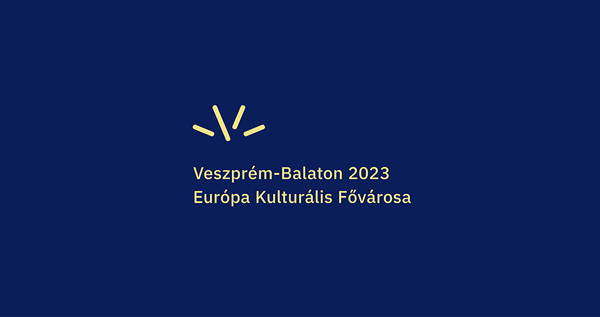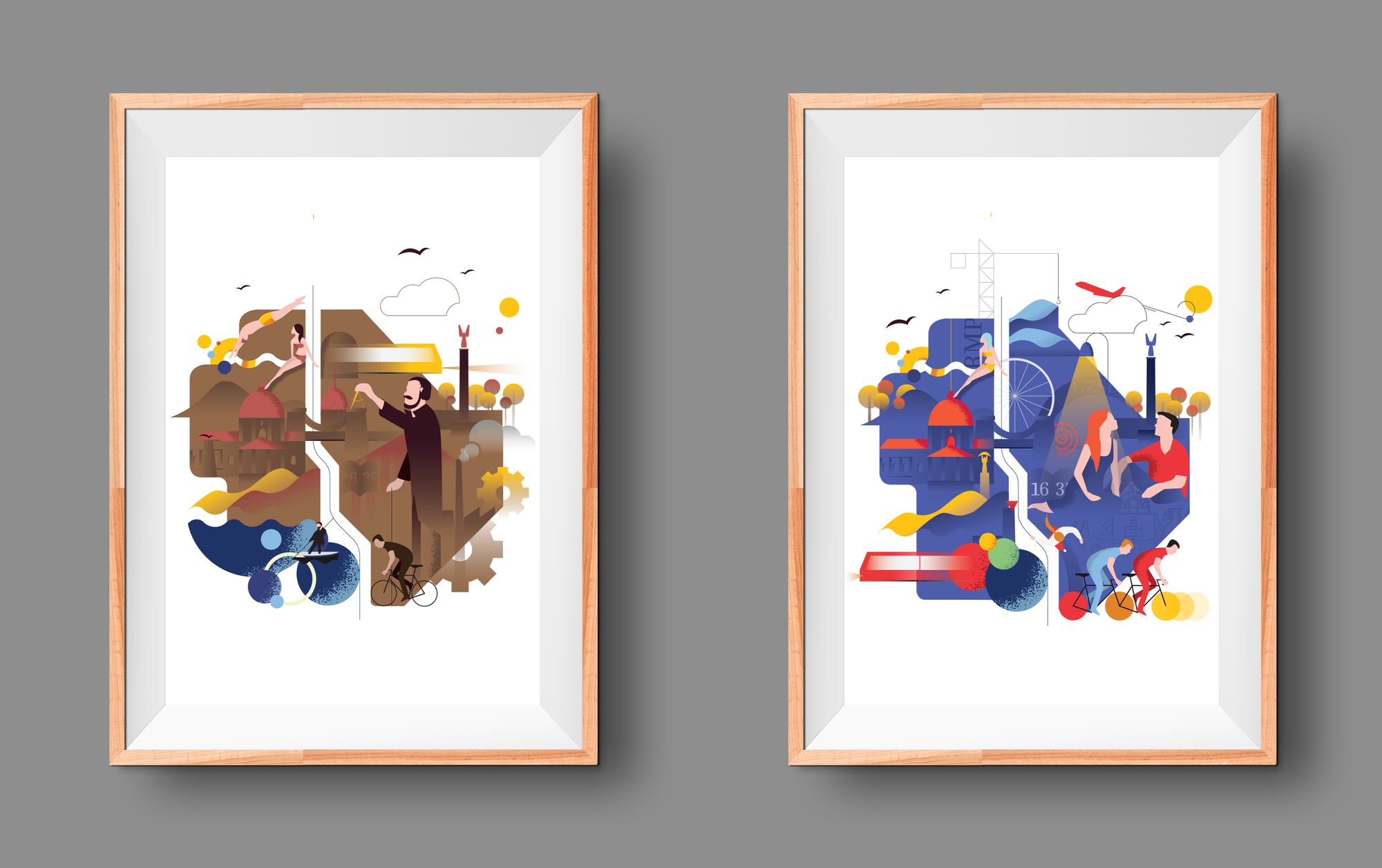“Without the past there is no future; the richer your past the more threads you have that tie you to a future.”
The fourth part of our series is about our capital city, Budapest. In the case of this continuously developing city, instead of having to think about what to put in its past and present image, I rather had to hold myself back. Since the birth of our magazine, we have published quite an amount of stories and curiosities related to Budapest, so maybe it comes as no surprise that this became the most detailed episode.
The “past” Budapest poster mainly depicts the details, developments and dominant actors of the city in the 19th century. This is why I have given a central place to our oldest and most famous bridge on the Danube, one of the symbols of the Hungarian capital: the Széchenyi Chain Bridge. Next to the bridge stands István Széchenyi, who initiated the construction of the bridge, also known as the “the greatest Hungarian”. In addition to the Buda Castle Palace, one can also find the underground railway handed over at the Millennium, a part of Heroes Square and the dome of the Parliament. The bathing characters placed on the northern part of the Buda side refer to the oldest bath of the city, Csillaghegy Bath, while the gear on the southern part of Pest represents this industrial area of Budapest.
I used the same buildings and elements for today’s image of the city, too, complemented by public sentiments implying to the vibrant cultural and architectural nature of Budapest. Let’s just think about the night life of the downtown or the large-scale future projects of the city.

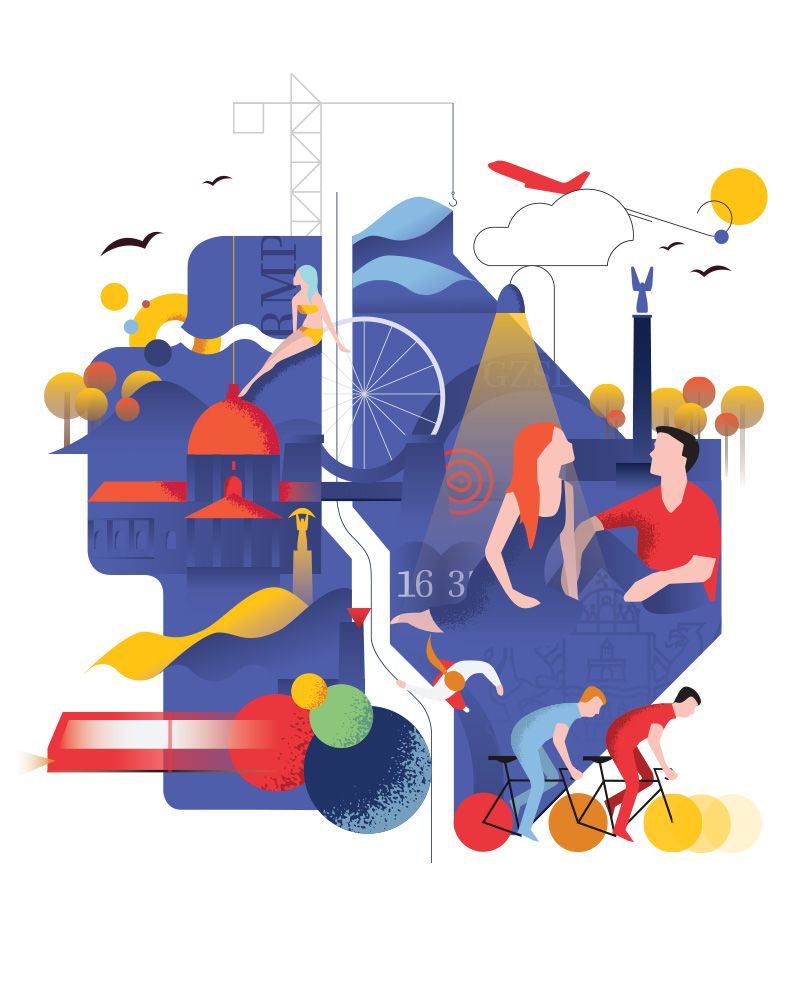
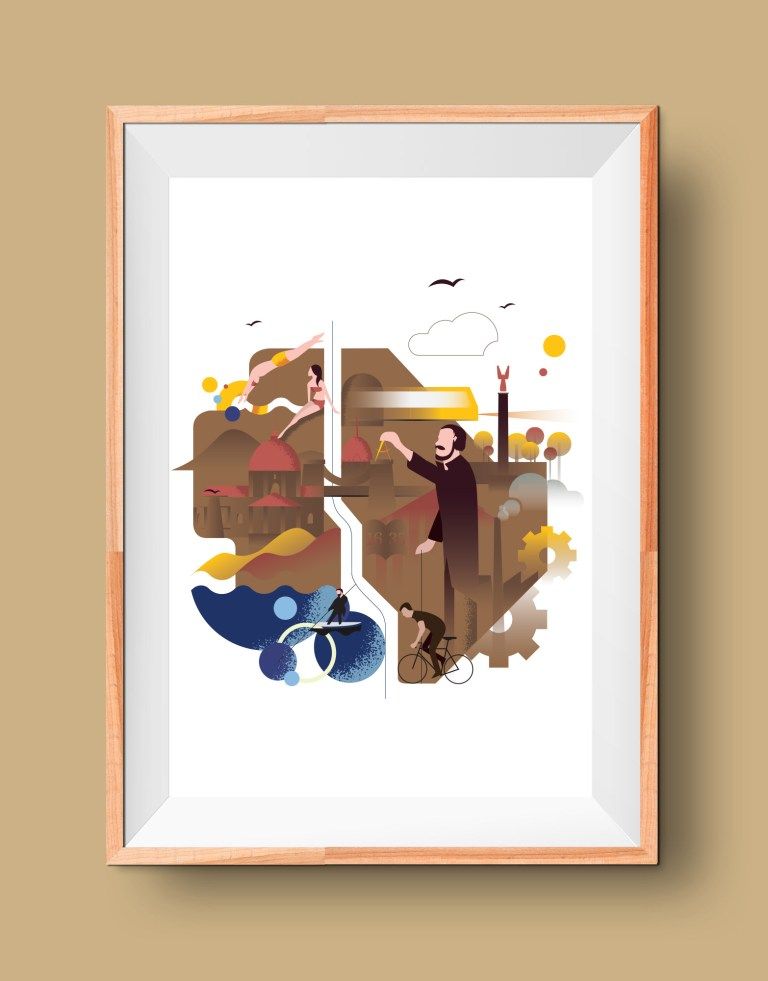
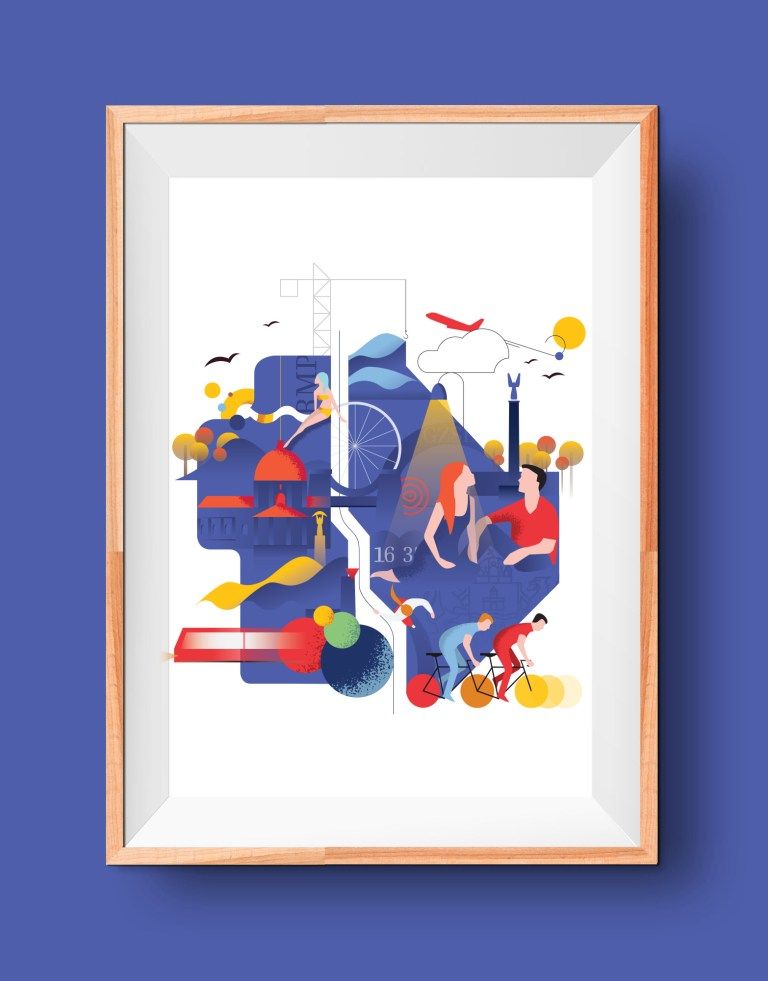
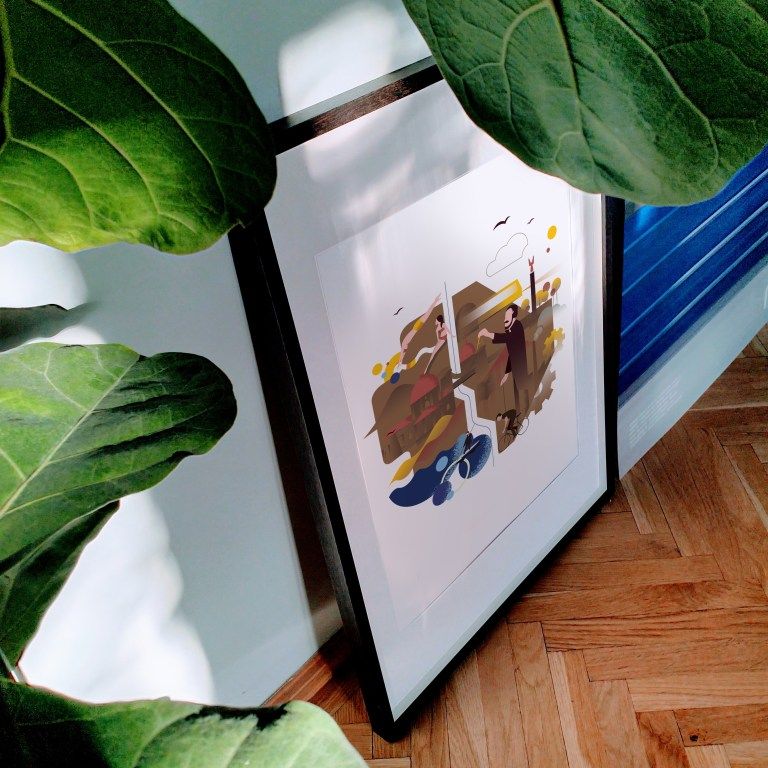
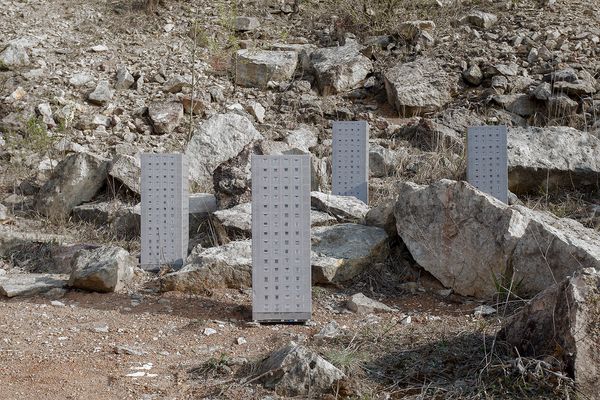
SETUP
